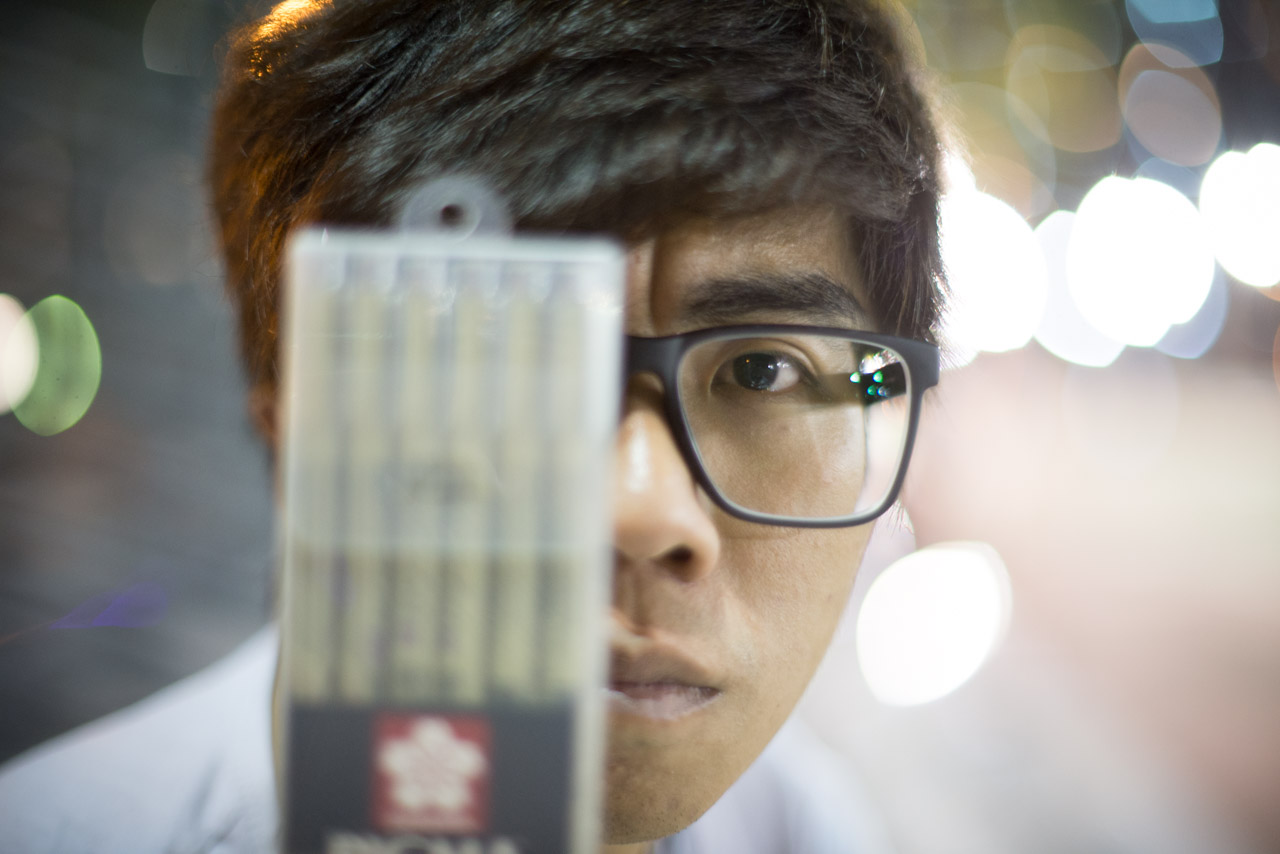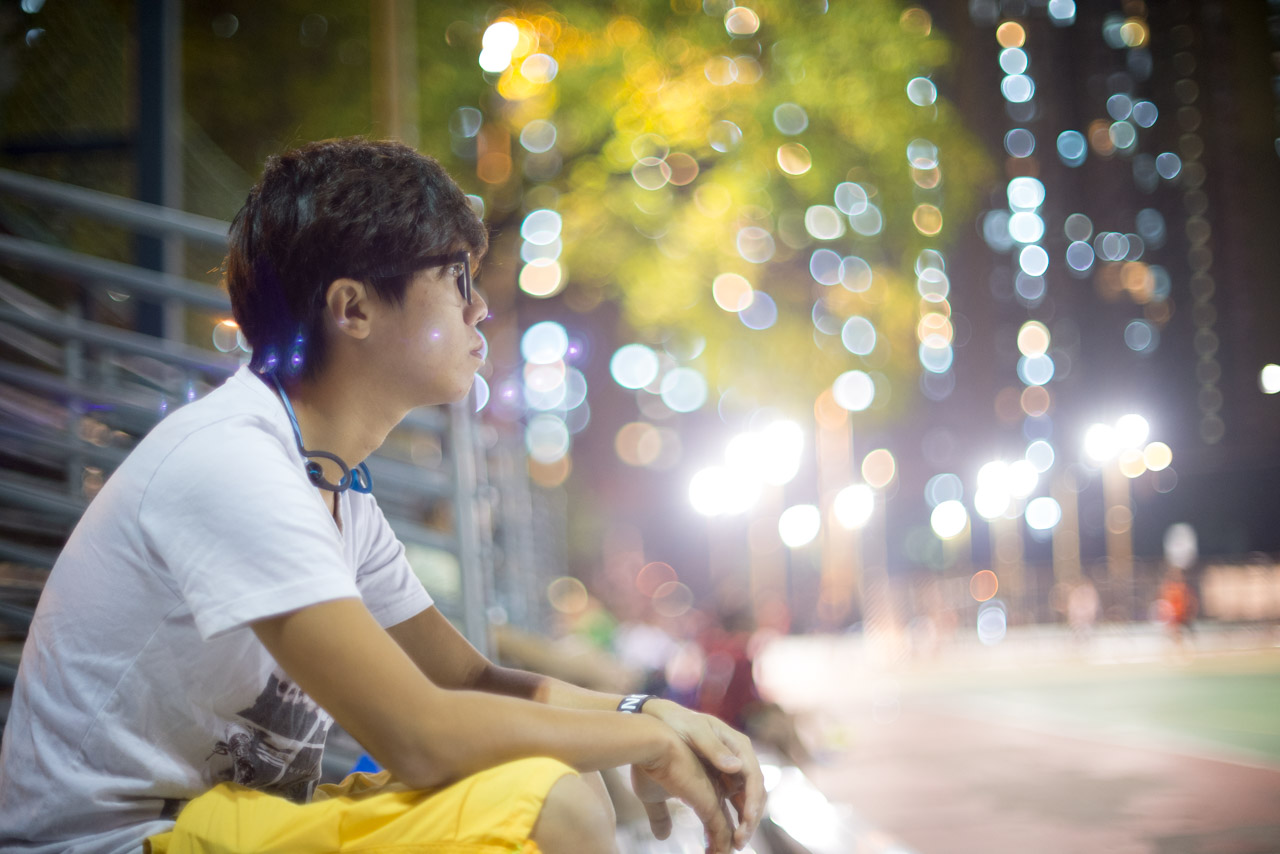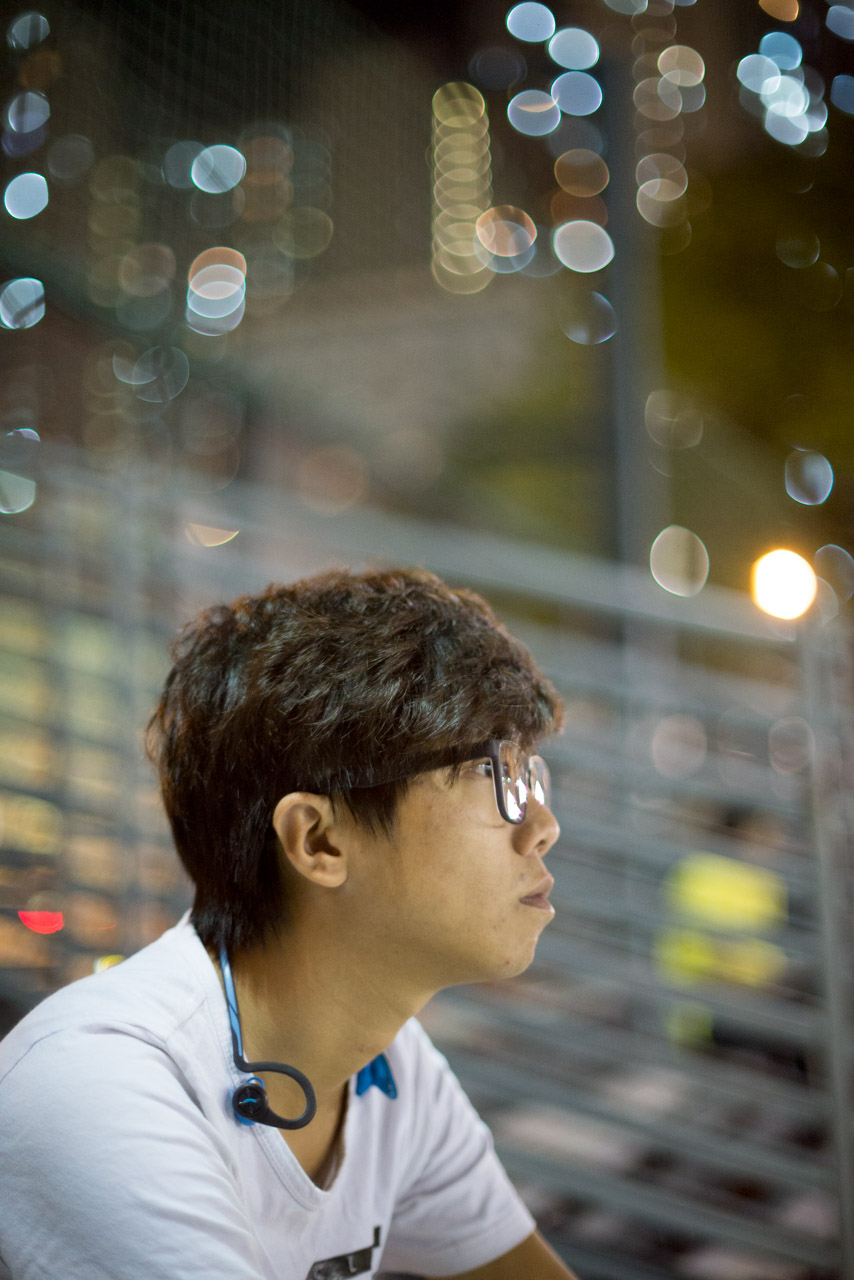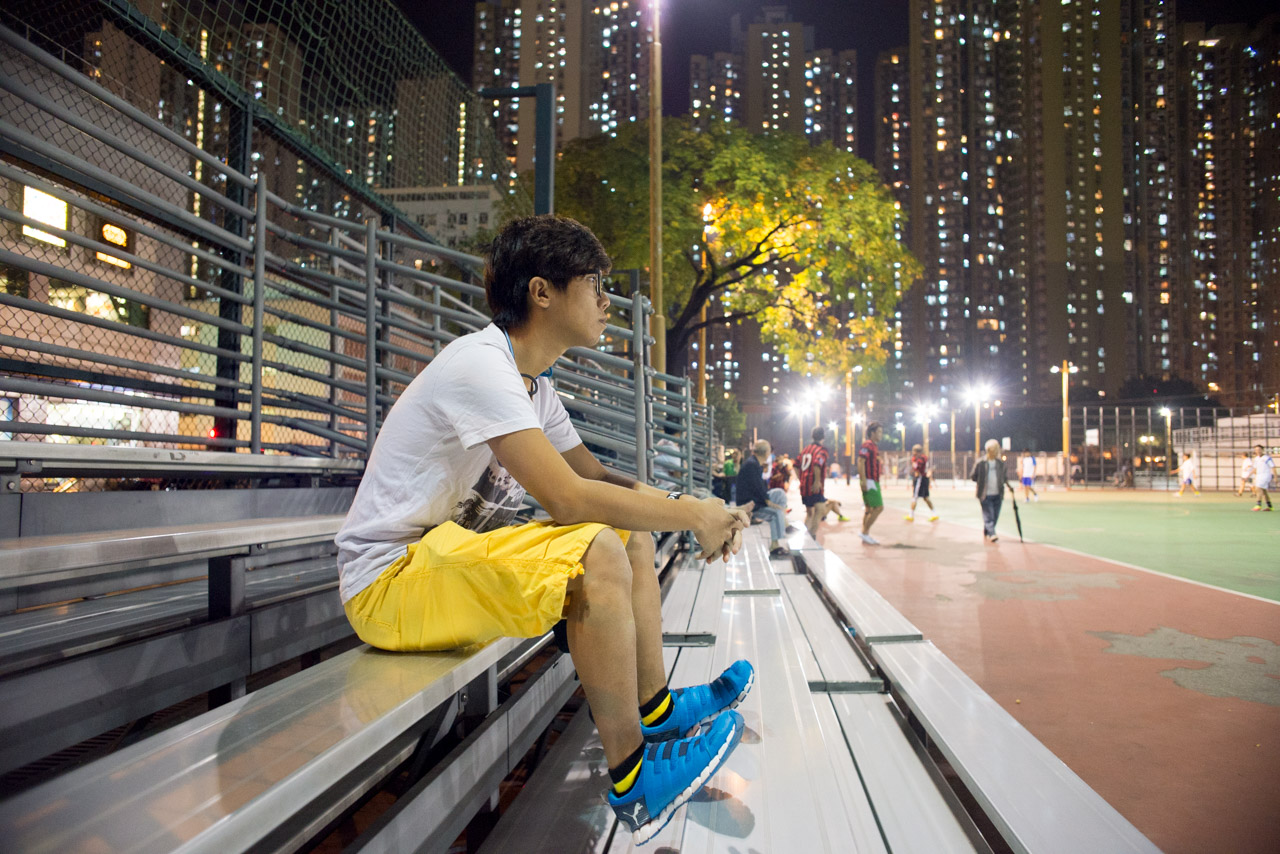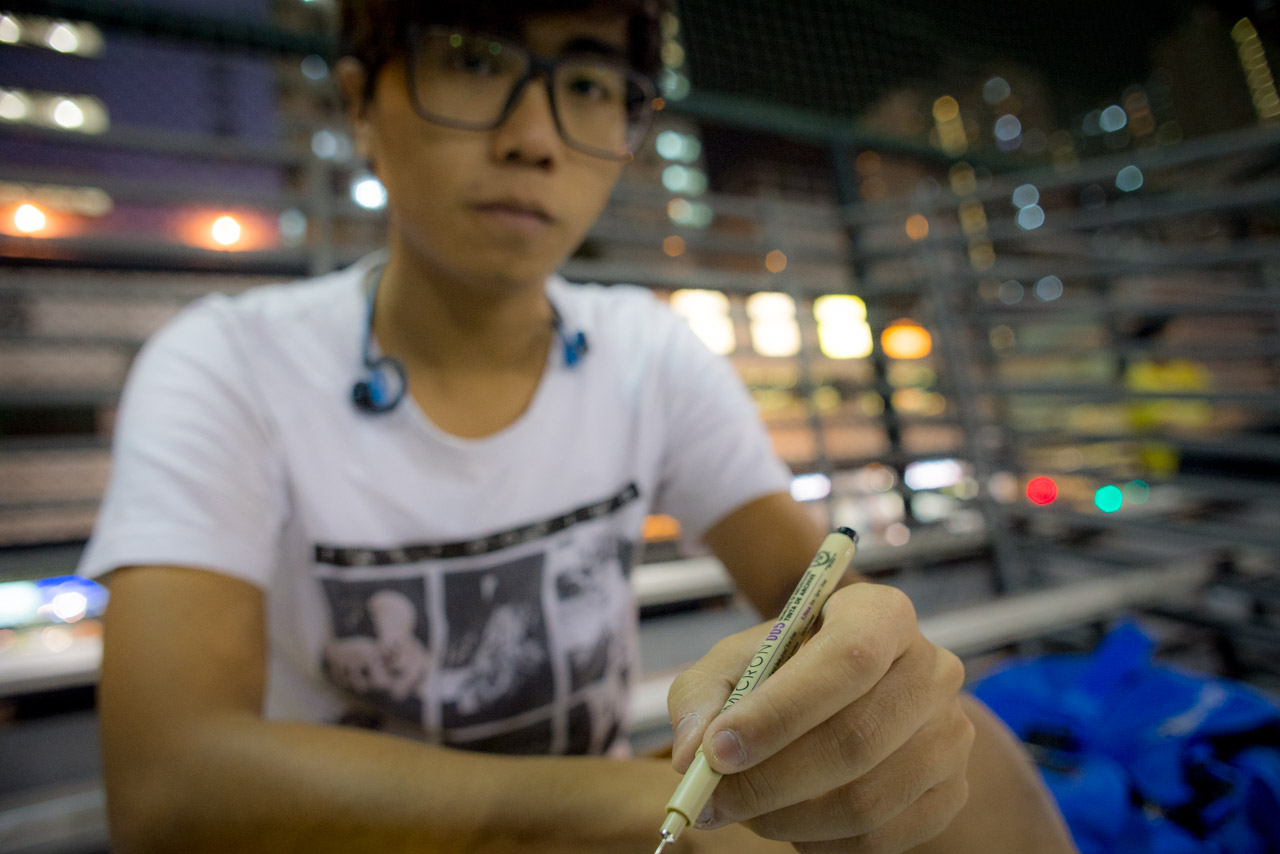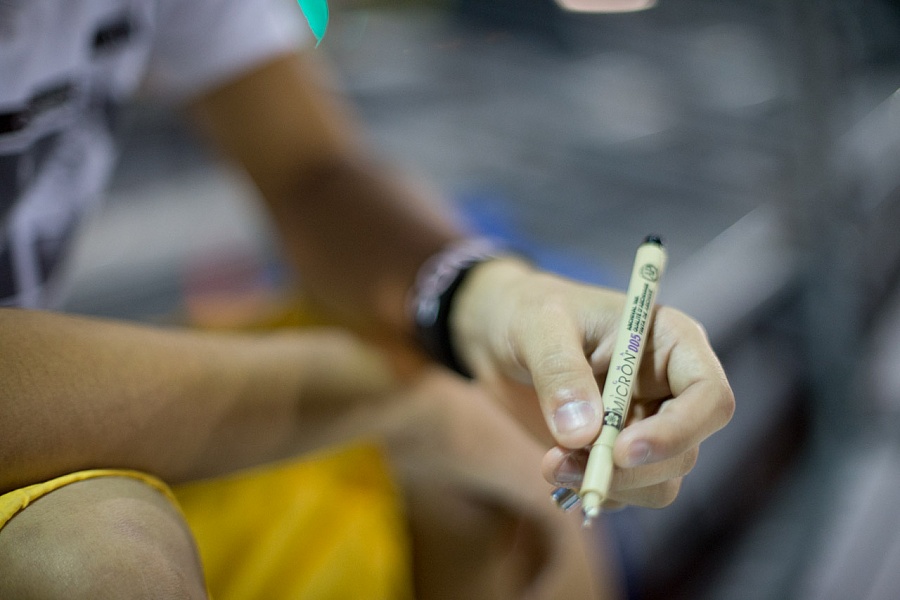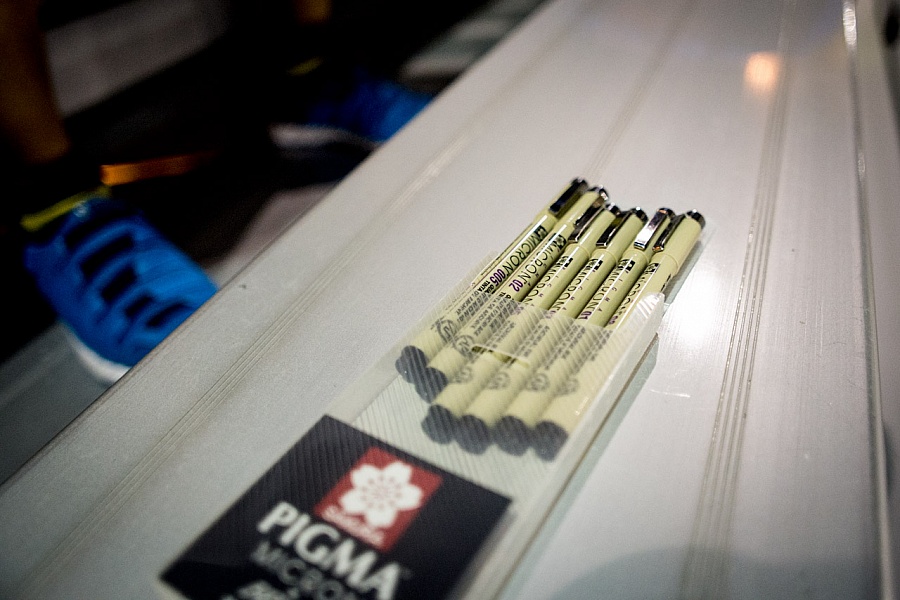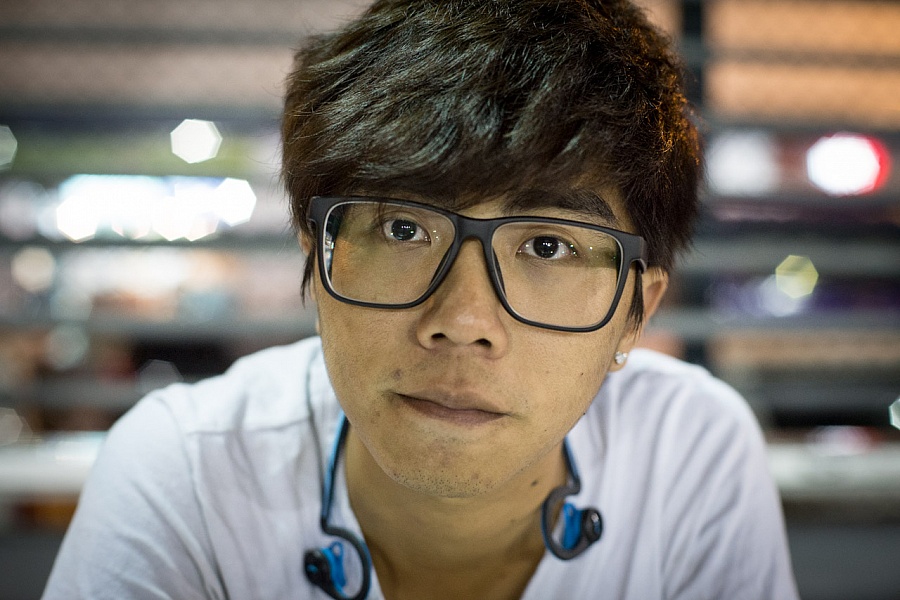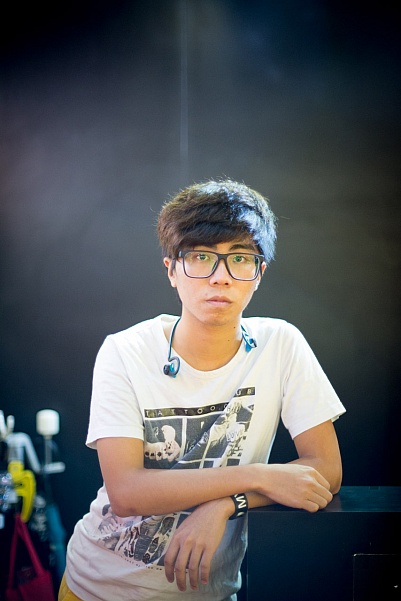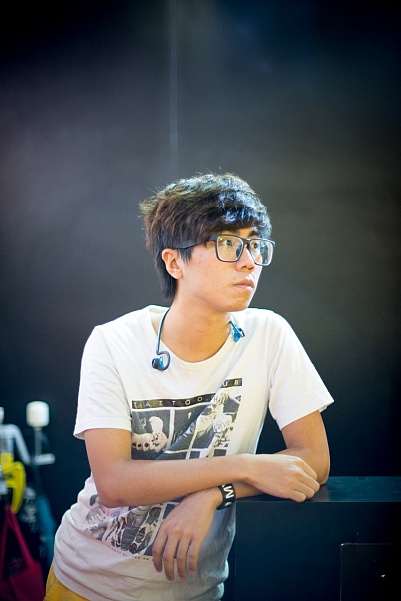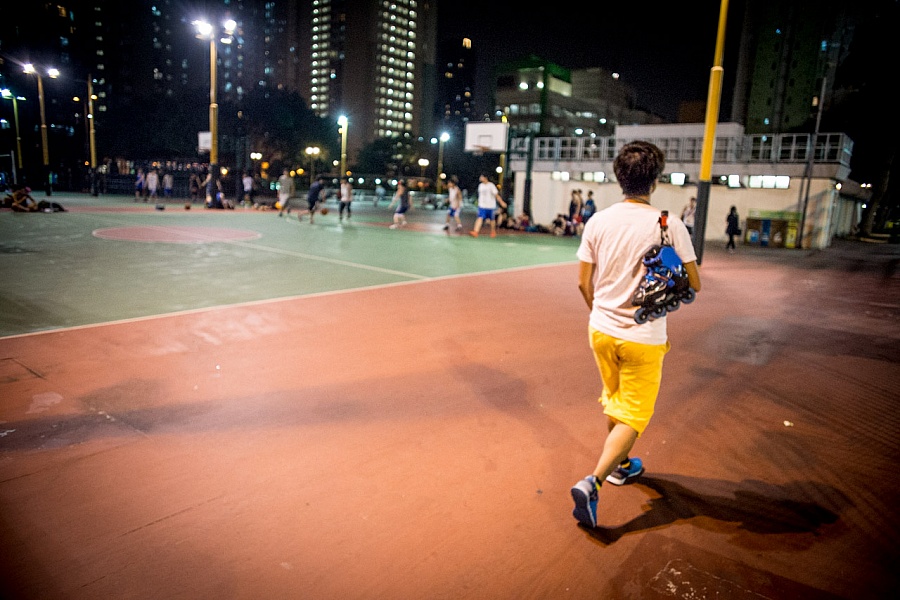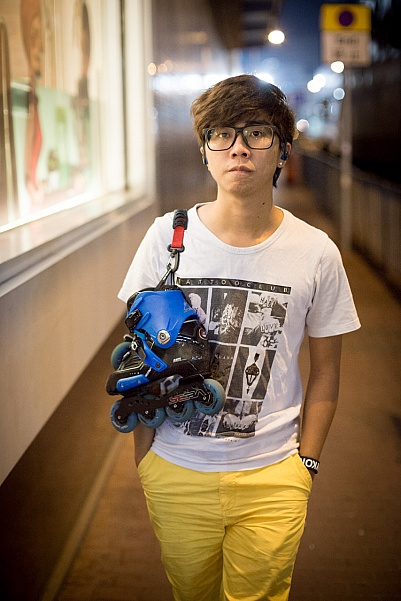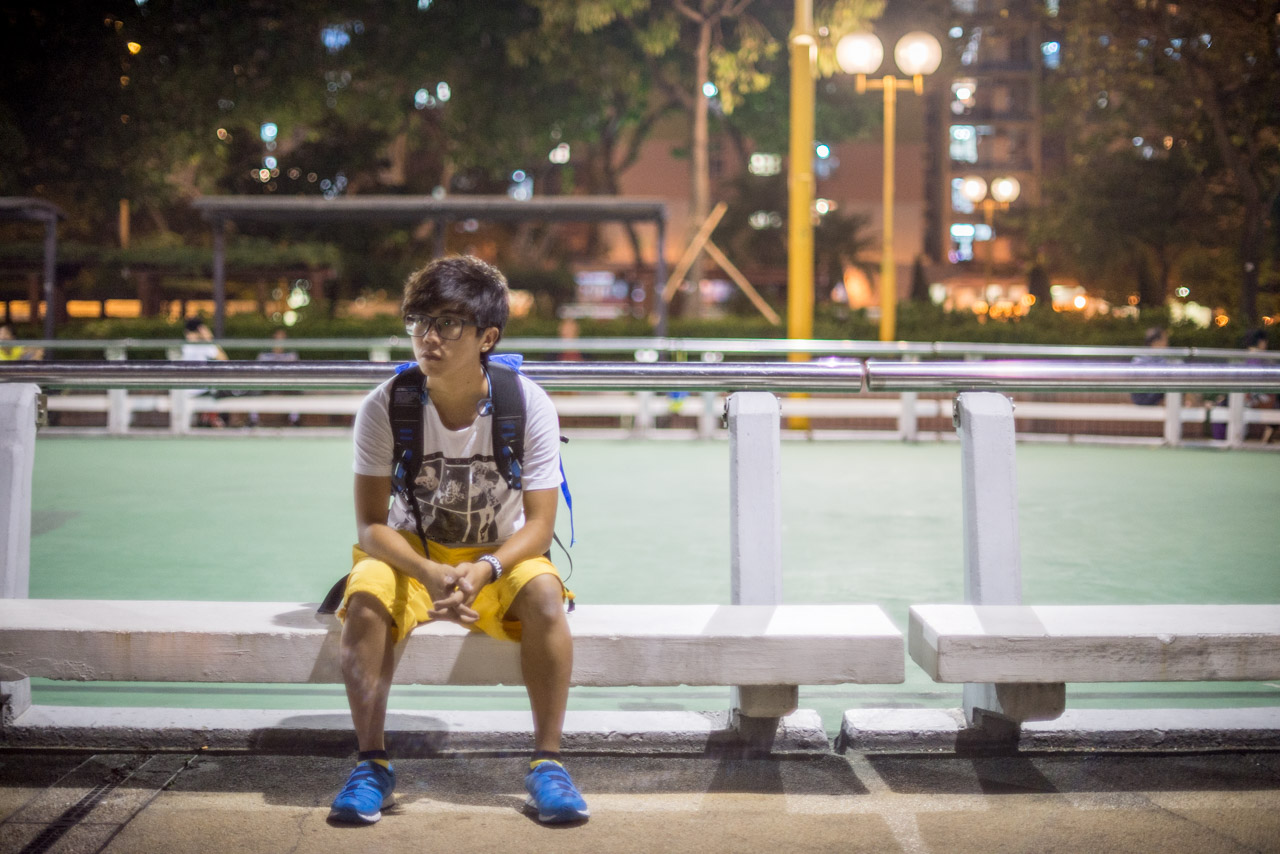While visiting old neighbourhoods, I got to know Oliver Chan Ho-man, who lives in Pak Tin Estate in Shek Kep Mei. We were chatting one time, and he gave me some drawings of street scenes, in Sham Shui Po. In a few simple strokes of the pen, they showed the ordinary neighbourhood folk of Sham Shui Po's street stalls, locals gossiping, and the unusual shops in the district, vividly capturing the character of life in the older quarter. I gasped in appreciation and quickly quizzed Oliver if these were his own works. Only then did I realise the young man in front of me, dressed in shorts and a vest, was in fact a talented hidden artist.
When we first met, Oliver was working as a lighting electrician, but once he had qualified as a roller-blading instructor, he took up his passion as a profession and became a full-time coach. I couldn't help but ask about his other passion – drawing – and was surprised to learn he had never taken a single art class, and has simply been drawing by feel since he was young. Oliver used to draw cartoon characters most of the time, but he later took a course in interior design and began using street scenes as his model. All along, he has been self-taught, gradually researching around any difficulties along the way. Recently, Oliver has taken to filling a sheet of paper with geometric shapes, doodling away whenever he has a moment or is feeling down.
Every time I ask him if he has ever thought of becoming a full-time artist, he always says he has never passed any certificates or qualifications – even to the extent that he turns down neighbours when they ask him to teach them some art. He prefers to draw at his whim. The freedom and self-determination Oliver talks of is also applicable to his rollerblading; he prefers skating on the main road – using the full width for broad strides – to being constricted to the cycle paths or in a skate park. At the very least, there is more to see that way. Oliver says that following strict rules or doing things he dislikes would ultimately strip all senses of pleasure or enjoyment; this is probably why he could never take drawing classes as a child.
Oliver has always had an affinity to the street. The same goes for his sketching. Our conversation returns to that first set of his Sham Shui Po drawings I saw. The settings are not much to write home about; dirty and cramped. But in Oliver's hands they become intricate lifestyle records. He particularly loves the scenery of Hong Kong's concrete jungle, even though the streets may be congested and narrow, without the aesthetic beauty of the countryside. The neon signs and tightly packed buildings together create create a layered effect that is ideal for the contrasting shades and lines of the artist. With Hong Kong's land shortage, street scenes have become the dominant characteristic of the landscape. As soon as we step out our front door, we are enveloped in street culture; whenever Oliver's eye catches an intriguing street composition, he picks up his pens and draws.
Oliver repeatedly says his drawings are improvised and without meaning, but he does have a vision. He wants to capture the many-layered nature of street scenes, using line drawing in a single colour; the more crowded the composition the more he needs to go into playing around with technique. "Different variations and densities of delicate and coarse line work and bring out different textures," he says. And in this way, he uses black lines to capture all the streets and alleys between Sham Shui Po and Hung Hom. For each composition, he first photographs the area, then returns home to painstakingly recreate it by hand; if the drawing has the slightest mistake, he feels compelled to start afresh. Oliver describes this persistency as verging on the neurotic.
However, Oliver only ever shares his drawings with friends, but when we include his "Sham Shui Po Series" in our "Tales of Sham Shui Po" exhibition they drew the interest of a good number of visitors. There was talk of buying his works and of artistic collaborations, but this 24-year-old artist showed little interest. Offered "fame", "prospects". "a future" - keywords that are normally at the forefront of young people's minds – and he sticks to his guns, preferring to "draw when I want to draw" and continue walking his own path.
Q: What do up the most about Hong Kong?
A: As a city it has all you could need by way of fashion, food, housing and transport, but aside from the city, you can also get close to nature.
Q: What do you dislike the most about Hong Kong?
A: The conflicts between mainland China and Hong Kong are causing many unreasonable things, and the government just has not taken any appropriate measures to improve the situation.
Q: What does Hong Kong have to do to be sustainable?
A: Where everyone is free to pursue and develop their skills according to their own wishes.

